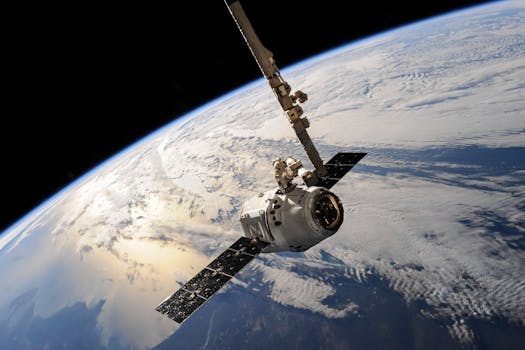The Future of Satellites: Revolutionizing Global Connectivity
The future of satellites is poised to revolutionize global connectivity, enabling faster and more reliable communication networks. With advancements in space technology, satellites are becoming increasingly important for a wide range of applications, from navigation and communication to weather forecasting and Earth observation.

The Future of Satellites: Revolutionizing Global Connectivity
The future of satellites is poised to revolutionize global connectivity, enabling faster and more reliable communication networks. With advancements in space technology, satellites are becoming increasingly important for a wide range of applications, from navigation and communication to weather forecasting and Earth observation. In this article, we will explore the future of satellites and their potential impact on global connectivity.
Introduction to Satellites
Satellites have been a crucial part of modern technology for decades, providing a wide range of services including television broadcasting, navigation, and communication. However, the role of satellites is evolving rapidly, driven by advancements in space technology and the growing demand for global connectivity. The future of satellites is expected to be shaped by several key trends, including the development of new satellite constellations, advancements in satellite technology, and the growing importance of space-based services.
The Future of Satellite Constellations
One of the most significant trends shaping the future of satellites is the development of new satellite constellations. These constellations, which typically consist of hundreds or thousands of small satellites, are designed to provide global coverage and enable a wide range of services, including communication, navigation, and Earth observation. Companies such as SpaceX, Amazon, and OneWeb are investing heavily in the development of satellite constellations, with the goal of providing fast and reliable internet connectivity to underserved communities around the world.
The development of satellite constellations is expected to have a major impact on global connectivity, enabling faster and more reliable communication networks. These constellations will also enable a wide range of new services, including remote sensing, weather forecasting, and navigation. However, the development of satellite constellations also raises several challenges, including the need for advanced satellite technology, the risk of space debris, and the potential for interference with other satellite systems.
Advances in Satellite Technology
Advances in satellite technology are also playing a crucial role in shaping the future of satellites. New technologies, such as phased array antennas and high-throughput satellites, are enabling faster and more reliable communication networks. The development of new satellite propulsion systems, such as electric propulsion and advanced ion engines, is also enabling satellites to operate more efficiently and effectively.
Another key trend shaping the future of satellites is the growing importance of space-based services. Satellites are being used for a wide range of applications, including navigation, communication, and Earth observation. The development of new satellite-based services, such as satellite-based internet connectivity and satellite-based navigation, is expected to have a major impact on global connectivity and the economy.
Conclusion
In conclusion, the future of satellites is poised to revolutionize global connectivity, enabling faster and more reliable communication networks. With advancements in space technology and the development of new satellite constellations, satellites are becoming increasingly important for a wide range of applications. As the demand for global connectivity continues to grow, the role of satellites will only become more critical, enabling new services and applications that will shape the future of our planet.


